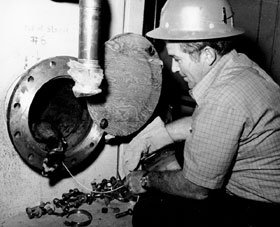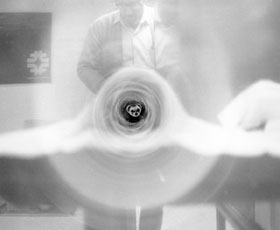It was in the late 1960s and we were working at Fermilab. There were a number of us British expatriates there. It was called the “brain drain” because many large government-funded projects needed help from Europe. The space program, high-energy physics research and various nuclear power undertakings competed with each other for the inadequate number of qualified American technologists needed, and aid from abroad was welcomed.
My English friend Roy Billinge had been given a sizeable responsibility involving the construction of the main components of a particle accelerator on a 10-square-mile site on the prairie, 40 miles from Chicago. The budget allotted by Congress was adequate, but the time scale was tight. The success of the project hinged on each needed item being available on time. A delay with a critical component could slow the project down or even cause it to fail.
Roy, a manager who could be relied upon to take ingenious original decisions, decided to import some talent from England. He found a worker at a laboratory near Oxford who was known for his entrepreneurial skills. His name was Bob Sheldon. He would join the project as a fixer, and his specific responsibility was to look out for items with a long delivery delay and try to find alternative sources. At the same time he was to keep an eye open for possible shortcuts and money-saving ideas. A process like that, competently pursued, could easily save enough money and time for his salary to be insignificant.
It worked! Bob brought his wife from England, and the two of them were a wonderful addition to the social life at the lab too. Bob was an affable North-countryman with an expansive personality and got on well with people. Any engineer or physicist in the team who was placing an order for raw materials, machines or high-tech instrumentation would first consult Bob, who made some inquiries and often found a solution that saved time or cost less.

Felicia investigates the opening in a vacuum pipe in the Meson Lab with the help of Wally Pelczarski, designer in the Main Ring Section. Photo: Tim Fielding
The accelerator was completed on schedule and well within budget. They tried to get it working, but the particles consistently failed to circulate in the miles-long stainless steel tube. The tube was a little larger than the diameter of a tennis ball and was normally pumped out to extract all the air so that the particles could circulate unimpeded. Was there a blockage? Had a workman left an object in the tube? How to find an obstruction in all those miles of tubing? Ask Bob, of course.
As predicted, Bob had a solution. In his part of Yorkshire, hunters used ferrets. Ferrets are weasel-like mammals who enjoy going down tunnels and flushing out rabbits. A ferret would not hesitate to run down the inside of the stainless steel tube, even if that involved a long journey into the unknown. Furthermore, it would be a sort of green solution to a technical problem, and everybody liked the idea of that. Bob was delegated to find and purchase a ferret and get instructions on its care and upkeep. It formed a talking point in the interval before its arrival. Suppose the ferret, instead of finding an obstruction, caused one by leaving droppings in the tube? Give it an aperient beforehand, perhaps?
The ferret arrived in a cage. They called her Felicia, and she soon won everyone over. The potential problem of the droppings was avoided by supplying Felicia with a diaper. Felicia was introduced to the stainless steel tube and went down it without hesitation. Hours later she emerged, looking a little tired and bemused but otherwise quite healthy. There was no obstruction.
The mathematicians found out why the particles had failed to circulate. It was something to do with the stability of the orbit, and the particles were crashing into the wall of the tube long before they completed their circular journey. They even found a solution, and they were able to pension off Felicia and relegate her to the position of laboratory pet and mascot. Bob escaped from the situation with his reputation intact. After all, he had furnished a solution to the problem as it had been put to him.
I wonder whether Felicia is still remembered at Fermilab?
Frank Beck is a retired CERN staff member living in England. He spent two years at the Fermilab as head of research services when the Energy Saver was being commissioned.
Editor’s note: For more about the pipe-cleaning ferret, have a look at various local newspaper accounts of Felicia recorded on the History and Archives Project website. Also check out a 1971 issue of The Village Crier. The Village Crier published an obituary of Felicia a year later.




